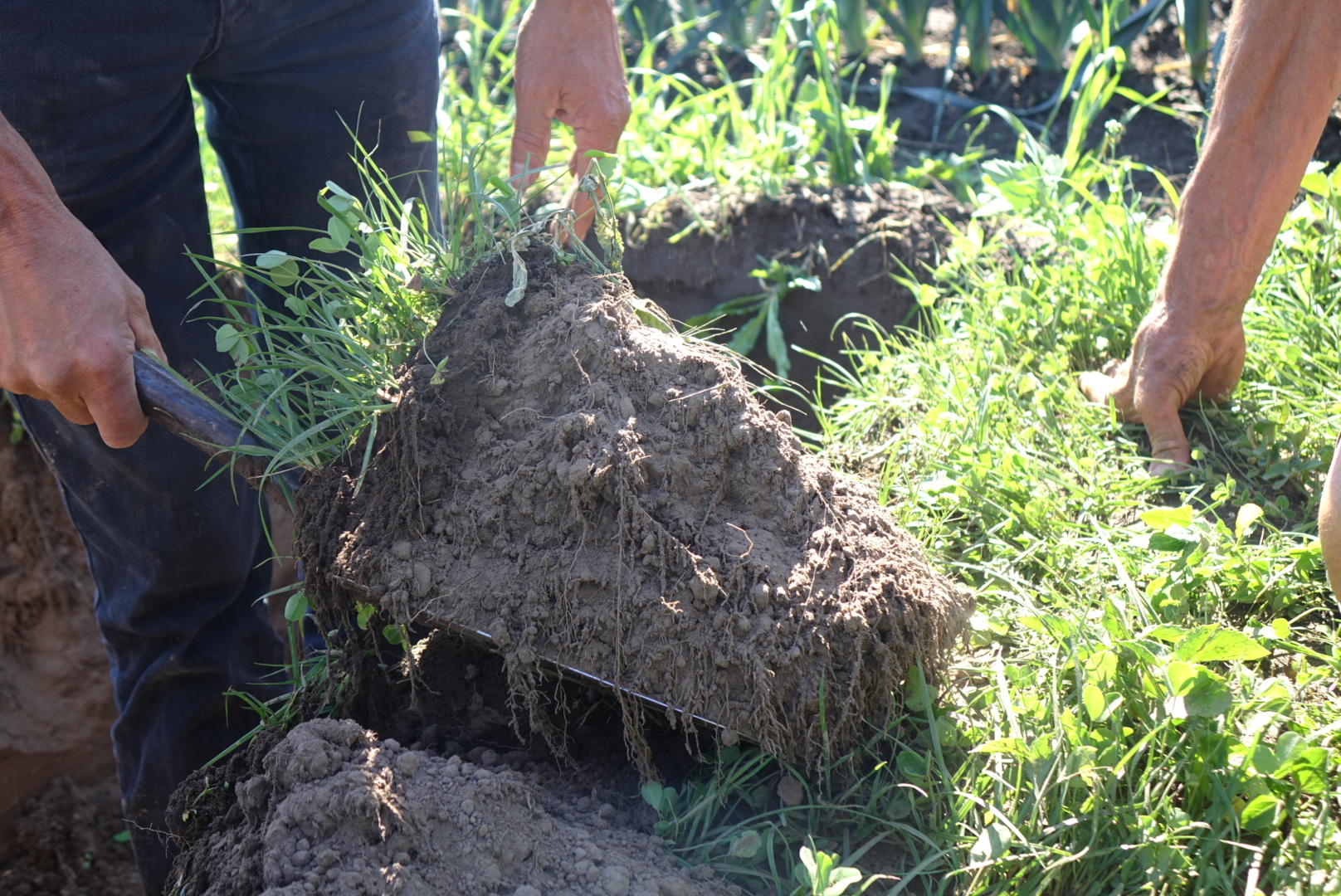
Plant roots
Plant roots form the bridge between the aboveground and the belowground part of agroecosystems. Roots have multiple functions for the plant; they provide anchorage in soil, they can store valuable nutrient reserves (think about a sugar beet or carrot), and most importantly they are the plant organs responsible for exploring the soil to acquire water and nutrients.
From a soil perspective, plant roots constitute an important source of organic matter for the soil food web. Living plant roots release labile carbon resources in the form of root exudates that fuel microbial growth and activity. Root biomass also constitutes a large input of organic matter to soil where it will be decomposed by the soil community. Roots themselves can be shed by the plants during the growing seasons or are left behind after harvest. Through decomposition, these root-derived forms of carbon and nutrients cycle through the soil food web and can support soil organic matter formation. Plant roots also directly interact with the soil community through establishing symbiotic relationships with arbuscular mycorrhizal fungi and nitrogen-fixing bacteria as well as through interactions with beneficial and pathogenic organisms living in the rhizosphere.
There are many methods to measure plant roots in the field but they often require multiple visits to the field and need special infrastructure or equipment including root boxes, in-growth cores or minirhizotron cameras. A more straightforward but still time-consuming way to sample roots is using soil cores. After washing the roots from the soil cores, total root biomass (possible by depth) as well as root morphological and chemical characteristics can be measured[1],[2],[3].
Text by Dr. Marie Zwetsloot, Soil Biology Group, Wageningen University and Research
[1] Freschet GT et al. 2020. A starting guide to root ecology: strengthening ecological concepts and standardizing root classification, sampling, processing and trait measurements.
[2] Himmelbauer, ML et al. 2004. Estimating length, average diameter and surface area of roots using two different Image analyses systems. Plant and Soil, 260: 111–120.
[3] Hirte J et al. 2017. Overestimation of Crop Root Biomass in Field Experiments Due to Extraneous Organic Matter. Frontiers in Plant Science, 8: 284.
